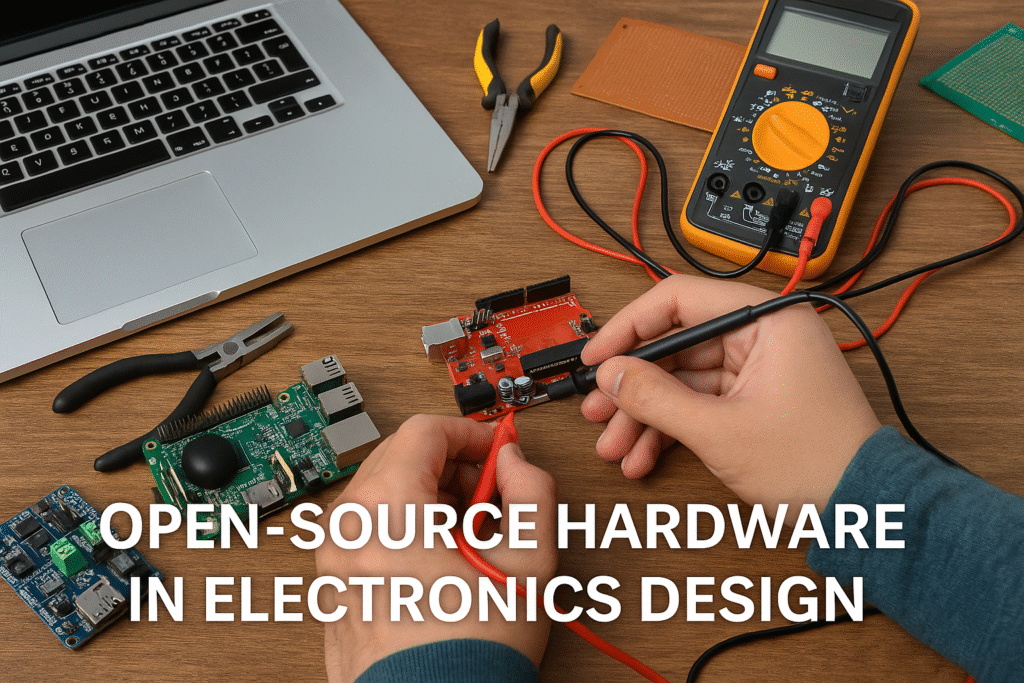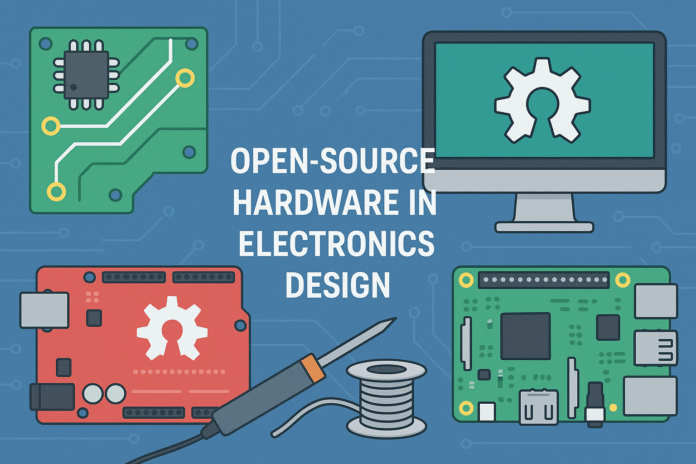Open-source hardware The electronics industry has experienced a rapid transformation in recent years, driven in large part by the global movement toward open-source hardware. This shift is not limited to software alone; open hardware platforms are empowering engineers, startups, and hobbyists to design, prototype, and manufacture electronic products more efficiently and at lower costs. In particular, open-source tools have significantly influenced areas such as embedded systems, IoT development, and pcb design. As the demand for faster and more cost-effective product development grows, the open-source model is proving to be a valuable asset in electronics design.
Open-source hardware refers to physical electronic components and devices whose design information—including schematics, bill of materials (BOM), PCB layouts, and firmware—is publicly available. Anyone can study, modify, distribute, and build upon these designs. The model encourages transparency and collaboration, removing proprietary restrictions and giving rise to communities of innovation across the globe.
Benefits of open-source hardware One of the main advantages of open-source hardware is the reduction in development costs. Engineers and developers no longer need to start from scratch. With access to well-documented open designs, teams can reuse and modify proven circuits, speeding up development timelines while avoiding common pitfalls. This leads to faster prototyping and fewer errors during production.
Another significant benefit is the collaborative nature of open hardware. Platforms like GitHub, Hackaday.io, and CircuitMaker enable global collaboration where users contribute improvements, debug issues, and refine designs over time. This collaborative process yields better-tested and more reliable hardware than might be possible in a closed development setting.
Open-source hardware also reduces the barrier to entry for startups and makers. In traditional product development, licensing fees, proprietary toolchains, and limited access to reference designs create financial and technical hurdles. Open-source alternatives remove many of these limitations, enabling innovation even from small teams with limited resources.
Security and transparency are also key benefits. With access to all design files, engineers can verify each part of the system, ensuring there are no backdoors, vulnerabilities, or unknown components. This is especially important in sectors such as healthcare, defense, and communications, where trust and reliability are non-negotiable.
Open-source electronics projects Numerous electronics projects have demonstrated the power of open-source hardware. The Arduino project is perhaps the most well-known. What began as a small microcontroller board for students has become a global standard for rapid prototyping in electronics. Arduino provides complete access to board designs, firmware, and software libraries, making it ideal for educational use, research, and product development.
Another standout project is the Raspberry Pi. Although it is not fully open-source due to some closed components, the majority of its ecosystem encourages openness and third-party development. Its extensive documentation and software support make it one of the most widely adopted platforms in embedded computing.
Projects like KiCad, an open-source EDA (Electronic Design Automation) tool, have redefined the way engineers perform pcb design. With KiCad, users can create professional-quality schematics and layouts without the need for expensive licenses. Combined with fabrication services like OSH Park or JLCPCB, users can move from design to hardware in days.
The Open Compute Project, initiated by Facebook, promotes open-source hardware for data centers. This effort has produced open specifications for servers, storage, and networking equipment. It has been embraced by major players like Microsoft, Intel, and Google, showcasing the scalability of open hardware principles even at the enterprise level.

Using open-source hardware in design Integrating open-source hardware into your electronics design workflow involves several practical steps. First, identify existing open hardware modules that match your needs. These could be development boards, sensor modules, power management systems, or communication interfaces. Review their documentation, licensing terms, and community support.
Once a suitable base design is found, you can adapt it to your requirements. This might involve adjusting pin configurations, replacing components for cost or availability reasons, or integrating additional features. Many open hardware licenses permit commercial use, provided proper attribution is given. Always verify the license (e.g., CERN OHL, TAPR, MIT, or GPL) before distributing or selling derivative works.
Designers often use open-source EDA tools for circuit and pcb design, such as KiCad or gEDA. These tools allow editing and building upon existing designs while maintaining version control through platforms like Git. Designers can also simulate circuits using open-source SPICE tools before fabricating a prototype.
Another common practice is to use reference designs from microcontroller vendors like Espressif, STMicroelectronics, or Nordic Semiconductor. These vendors frequently release open hardware kits with software examples, which serve as excellent starting points for wireless, low-power, or sensor-based applications.
Prototyping is streamlined through services that support open formats. PCB manufacturers and assembly services now accept open-source EDA output files directly, and some even promote open designs by offering discounts or shared projects.
Popular open-source hardware platforms Several hardware platforms have gained traction for their open-source commitment and broad adoption:
- Arduino: With dozens of board variants and a massive ecosystem of shields and libraries, Arduino remains a leader in open-source hardware. It is especially popular for educational, IoT, and automation applications.
- ESP32 by Espressif: While the chip itself is proprietary, Espressif has released open-source development boards and SDKs. The ESP32 platform is widely used in wireless applications, including Wi-Fi, Bluetooth, and LoRa.
- BeagleBone: Developed by Texas Instruments and supported by a strong community, BeagleBone boards are open-source and used in industrial applications that require powerful processors and flexible I/O.
- RISC-V boards: Open-source processor architectures like RISC-V are gaining momentum. Boards such as SiFive’s HiFive and the BeagleV offer alternatives to ARM, with open instruction sets and toolchains.
- TinyFPGA and ULX3S: These FPGA platforms aim to make programmable logic accessible. Their schematics and toolchains are open, which is unusual in the traditionally closed FPGA market.
- OpenMV: A machine vision platform with open hardware and MicroPython support, enabling developers to integrate AI-powered vision into embedded systems.
These platforms not only simplify prototyping but also provide reference implementations that serve as springboards for custom product development.
The future of open-source hardware in electronics design As industries transition toward smarter and more connected devices, the need for rapid development, customization, and collaboration is only increasing. Open-source hardware is no longer just for hobbyists; it’s becoming a strategic tool in the hands of professional engineers and product developers.
Large corporations are beginning to understand the value of open design. By opening parts of their hardware stack, they tap into global innovation while reducing R&D costs. At the same time, governments and educational institutions are using open-source platforms to train the next generation of engineers, ensuring that future designs are based on accessible and transparent technology.
Challenges remain—such as quality control, intellectual property concerns, and long-term support—but the momentum behind open hardware continues to grow. As ecosystems mature and more contributors join, we can expect even more powerful tools, reference designs, and components to become freely available.
For companies looking to innovate without reinventing the wheel, and for individuals seeking to learn and contribute meaningfully to technology, open-source hardware is a practical and effective path forward.
